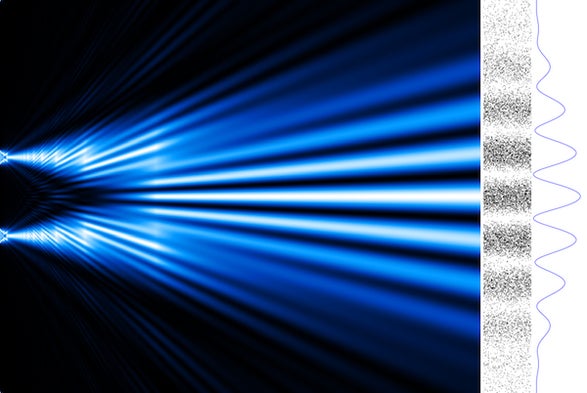What Does Quantum Theory Actually Tell Us about Reality?
Nearly a century after its founding, physicists and philosophers still don’t know—but they’re working on it

For a demonstration that overturned the great Isaac Newton’s ideas about the nature of light, it was staggeringly simple. It “may be repeated with great ease, wherever the sun shines,” the English physicist Thomas Young told the members of the Royal Society in London in November 1803, describing what is now known as a double-slit experiment, and Young wasn’t being overly melodramatic. He had come up with an elegant and decidedly homespun experiment to show light’s wavelike nature, and in doing so refuted Newton’s theory that light is made of corpuscles, or particles.
But the birth of quantum physics in the early 1900s made it clear that light is made of tiny, indivisible units, or quanta, of energy, which we call photons. Young’s experiment, when done with single photons or even single particles of matter, such as electrons and neutrons, is a conundrum to behold, raising fundamental questions about the very nature of reality. Some have even used it to argue that the quantum world is influenced by human consciousness, giving our minds an agency and a place in the ontology of the universe. But does the simple experiment really make such a case?
No comments:
Post a Comment